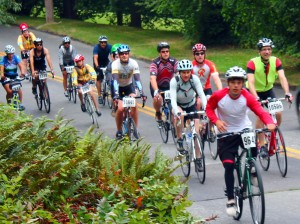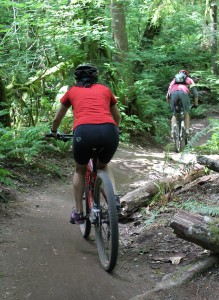A newly released economic study of outdoor recreation in Washington state finds that bicycling contributes $3.1 billion a year to the state’s economy.
That’s the fourth highest economic impact among the major outdoor pursuits listed in the study, following only Sightseeing and Nature (1), all types of Boating (2), and Hiking, Climbing, Camping (3).
And participation in bicycling was ranked 4th overall, trailing Walking, Running and Jogging, and Wildlife Viewing and Photography categories.
The study, Economic Analysis of Outdoor Recreation in Washington State, was prepared by Earth Economics of Tacoma for the Washington Recreation and Conservation Office in Olympia.
In all, the study found that residents and visitors to Washington spent about $21.6 billion a year on outdoor recreation trips and equipment.
Of the estimated $3.1 billion spent by bicyclists, the bulk went to trip-related expenses. Washington bicyclists spent $113 million on equipment, and $3 billion on travel, lodging, and supplies.
These types of studies are invaluable in helping states determine the value of improving and promoting outdoor facilities.
Although we might be surprised at the total economic impact and ranking of bicycling among outdoor pursuits in Washington, it should really come as no surprise.
The state has been ranked the most bicycle-friendly in the nation by the League of American Bicyclists for 7 years in a row. The state has 14 bicycle friendly communities, led by Seattle at the gold and Bellingham, Olympia, Port Townsend and Redmond at the silver level.
The Cascade Bicycle Club in Seattle is the nation’s largest at more than 15,000 members. The club offers daily free rides to members and nonmembers alike, and a number bicycling events throughout the year. The largest, Seattle to Portland Bicycle Classic, has drawn 10,000 people annually for more than a decade. Many other cities across the state also sport active bicycle clubs.
For those who enjoy trails riding, the state has 81 rails to trails the roll across the state for 1,057 miles, according to the Rails-to-Trails Conservancy. The John Wayne Pioneer Trail is the longest rail-trail in the nation, and the Columbia Plateau Trail is ranked No. 6.
Meanwhile the Evergreen Mountain Bike Alliance builds, maintains and lobbies for more mountain biking trails.
Looking at some of those facts, it’s less of a surprise that 14% of outdoor recreation expenditures go toward bicycling.
Writing about the economic analysis at the Washington Bikes! blog, Blake Trask says:
“The Earth Economics study shows the significant impact and opportunity of bicycle riding but still leaves a gap in knowledge about where or how bicycle riding can benefit local economies in Washington state. This lack of information is compounded as Washington state lacks a public tourism promotion agency or department; the state relies on various private-public partnerships that lack a focus on sector-specific opportunities like bicycle riding.
“Other states including Wisconsin, Iowa, Minnesota, and Oregon are ahead of Washington in understanding the bicycle travel and tourism sector. An improved understanding of bike travel and tourism in Washington state is needed to take advantage of this economic development opportunity statewide.”
He said Washington Bikes will seek more funding for more economic studies as part of its legislative agenda.



Recent Comments